This statement that professional snowboarder Kevin Jones made during his closing speech at the California Avalanche Workshop on Saturday October 17th fit very well with the theme of the entire event. No matter how much knowledge you have about snow science it is the dynamic of the group and the chain of decisions made that will affect you more than anything else. More on his speech later. The second annual California Avalanche Workshop was held on a rainy chilly day. Something made you feel as though that this winter would be different than the last three…
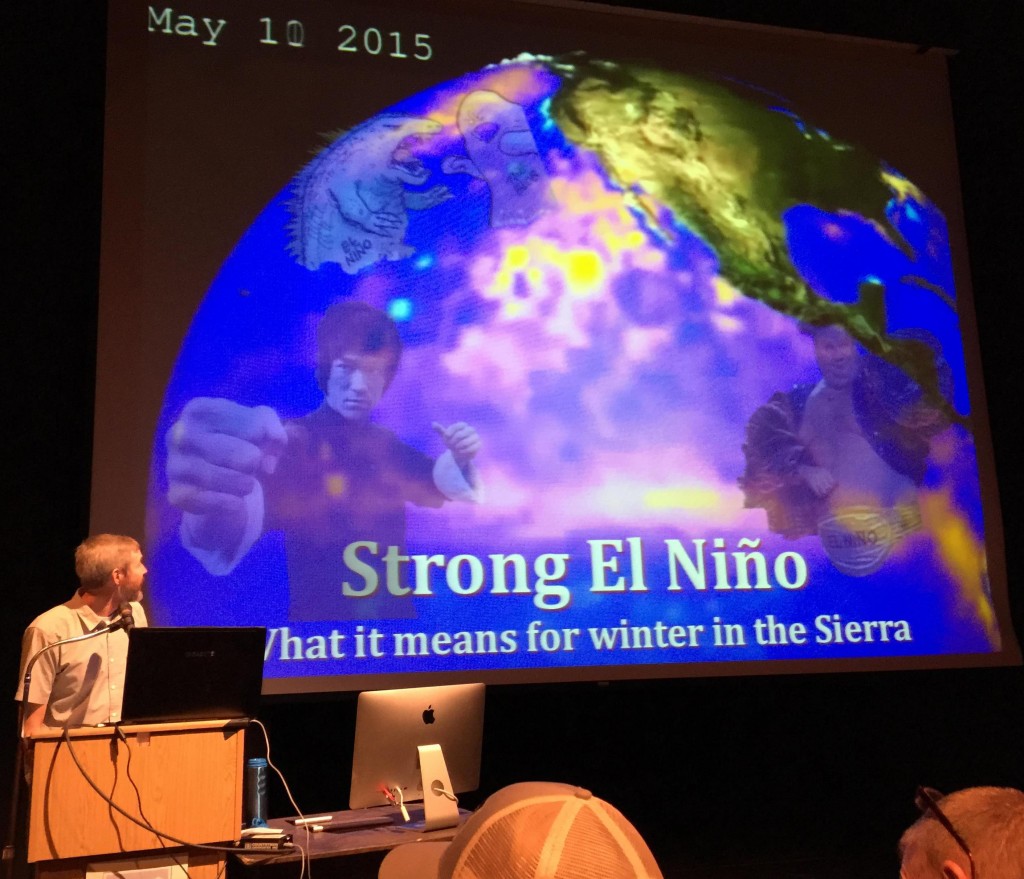
David Reichel kicked off the event explaining the origin of the name. If it were called the “Sierra” avalanche workshop then it would exclude the Cascades along with Mt Shasta. So the name that the workshop fell on was the California Avalanche Workshop. From there the program hit full stride quickly and we went directly into the first speaker.
David Page – The Human Factor 2.0
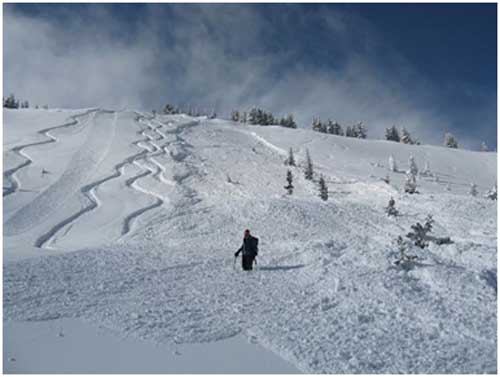
With tousled hair and a muscular frame similar to a surfer, David Page was the first to speak. He seemed carefree, but his eyes and body language showed that he was well traveled and spoken. From his demeanor, you could tell he’d seen a lot in his time. Having just flown in from the Philippines the night before and making the drive up from Mammoth at 5:45 am the same day, his dedication was evident. When he presented it was quickly apparent, he wasn’t just a skier journalist but an all-around writer. Most of the crowd knew him for writing the “Human Factor,” which was published in Powder Magazine. He spoke about a few interesting concepts. First, he put things into perspective. The risks in the backcountry and the lure of fresh powder which loom large in the community are small in comparison to the problems in the rest of the world. For example, there is a lot of talk about the “mega” El-Nino providing the North American mountains bountiful powder, but almost no discussion that at the other end of the planet in Southeast Asia they are bracing for a record breaking drought. This is what happens in that region in strong El-Nino years.
Self-Shame When Caught In An Avalanche
The next concept, he raised is that there is a sense of shame that goes along with getting caught in an avalanche when in the backcountry. The fact of the matter is, unfortunately tragedy will always occur in life. Turns out, this is opposite of what should happen. The more people talking about it the better the support structure to help others through it. The passing of knowledge allows for more opportunities to learn. It’s crucial to pass on firsthand accounts of real incidents. Lastly, he went into how there is a ton of information about snow science, but the human factor is the newest frontier in understanding how to keep people safe on snow covered mountains. Factors like “familiarity,” which is the sense that I’ve skied a certain face for over 10 years and it never triggers were introduced. Then group dynamics such as the decision maker in the group isn’t the right leader. They were simple selected because he/she is the “father” or a “senior” person in the group, but they have no true experience in the wild. All these play a role in being safe in avalanche country, just as much as snow conditions and terrain.
The Ward Creek Avalanche – A Humbling and Awakening Story

After the introduction of snow science and discussion of the human factor, it was time for reality. Standing at the podium Jon Rockwood looked like a person that lives to ski and loves traveling into the mountains. As he began to tell the story of this tragic event the first thing he highlighted was that the three people involved were all highly accomplished backcountry travelers. They all were risk averse, avalanche aware, and had even skied places like Denali. The day that the avalanche occurred it hadn’t snow for weeks and then a storm dumped over three feet of the white stuff. To enjoy the goods they decided to head over to Squaw Valley. Standing in a huge line waiting for the lifts to open they began to get impatient. The lifts were on wind hold for hours and it didn’t look like they were going to open.
What To Do?
A few options were raised like going to the bar, hiking inbounds on Dog Leg, heading to Ward Creek, or even heading over to one of their normal backcountry spots. The call was made to head to Ward Creek since it was the closest. Two of the three hadn’t skied the area before, but Ben stated that it would be perfect. Upon arrival the uphill trudge began. As they climbed they weren’t very sure where they were. Every step they kept asking and wondering. Finally at the top they tried to pick out their line. Jon pointed towards a tree and stated “over there.” You could tell this just got real. At this moment in the story, overwhelmed by emotions, Jon began to get choked up as he spoke about the nightmare unfolding.
The Nightmare Begins
Ben dropped first and drifted into the run past the point of no return. He kicked off an avalanche. Jon lost track of Ben because the run had a roll-over which meant there was no way to visually follow. He slowly moved down trying to see if Ben was okay. This caused a second avalanche which caught Ben and caused him to tumble all the way down to the bottom of the slope. When they found him, they discovered the slide had shattered his helmet against trees before stopping at the creek. Opening up and sharing his story so others could learn was truly one of the bravest things I’d ever seen. I can’t imagine being in his shoes.
What Does The Winter Look Like For Tahoe?

From such a humbling story, we transitioned to Zack Tolby, a meteorologist with the National Weather Service based in Reno. He began by providing a quick tip sheet on reading their forecasts along with some of the advancements they had made on their pages. One was the mountain forecast. It provided information regarding more or less snowfall and they added an avalanche forecast section. As expected he quickly covered what to expect this winter. Like a seasoned vet, he restrained from any predictions. Instead Zack simply pointed out that El Nino doesn’t mean Tahoe will get a big winter. It just means there is more likelihood that it won’t be a dry one. El Nino doesn’t give him hope, but rather the “RRR” or the ridiculously resilient ridge seems to finally look like it might go away. This is the root cause of 3 consecutively bad winters. Let’s hope this is true!
The Future Of Backcountry Travel – Avatech
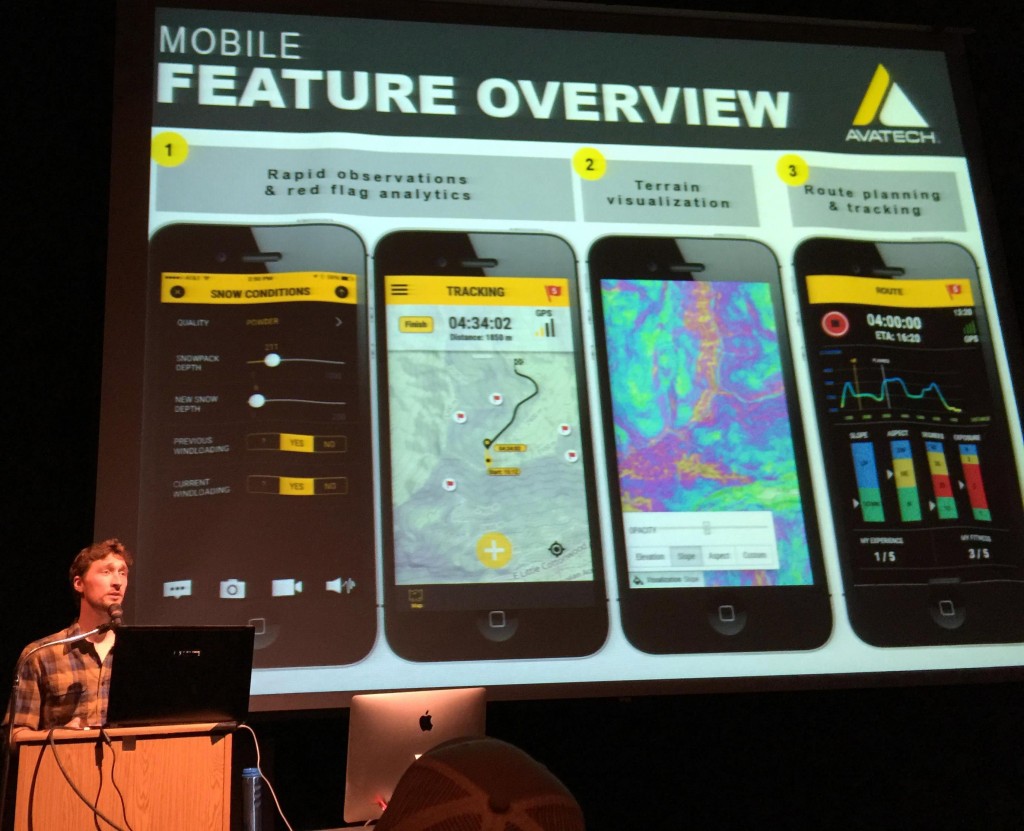
Next, it was time for some technology. Brint Markle the CEO of Avatech was on hand to show what role technology could play in snow safety. This new company which is based in Park City is filled with grads from MIT. Their device allows people from all around the world to measure, track and share snow conditions. Working alongside some of the largest avalanche safety organization, TGR, and many more, this looks to be the future of keeping backcountry travelers safe. Brint was quick to point out, this isn’t supposed to replace the standard tools available today but rather be complimentary in helping people be safe. In the coming months Avatech will be releasing more interesting gear so be on the lookout!
Avalanche Education
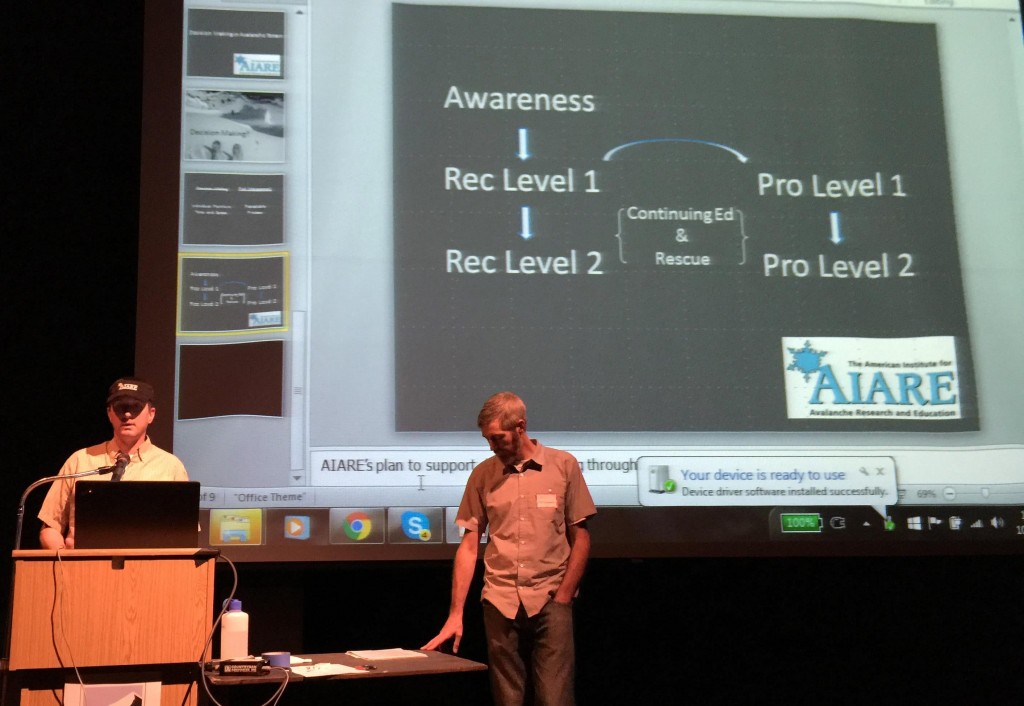
After breaking for lunch, we returned to Travis Feist an AIARE Instructor with the Sierra Avalanche Center. He began by highlighting the major upcoming changes in Avalanche Education that are on the horizon for the 2016-17 season. As it stands today, avalanche training ultimately has 4 levels of training:
- Awareness
- Level 1
- Level 2
- Level 3
Based on the challenges seen in the industry and the drop off of recreational backcountry users taking Level 2 courses the decision has been made to divide the system into “Rec Level” and “Pro Level”. This will help make it easier for recreationalists to take effective level courses for their needs, while ensuring there is still a high level training available for industry professionals. These changes will allow users of all skill sets to get the education necessary to make better decision in the backcountry.
Forecasting Extreme Snowfall in the Northern Sierra Nevadas
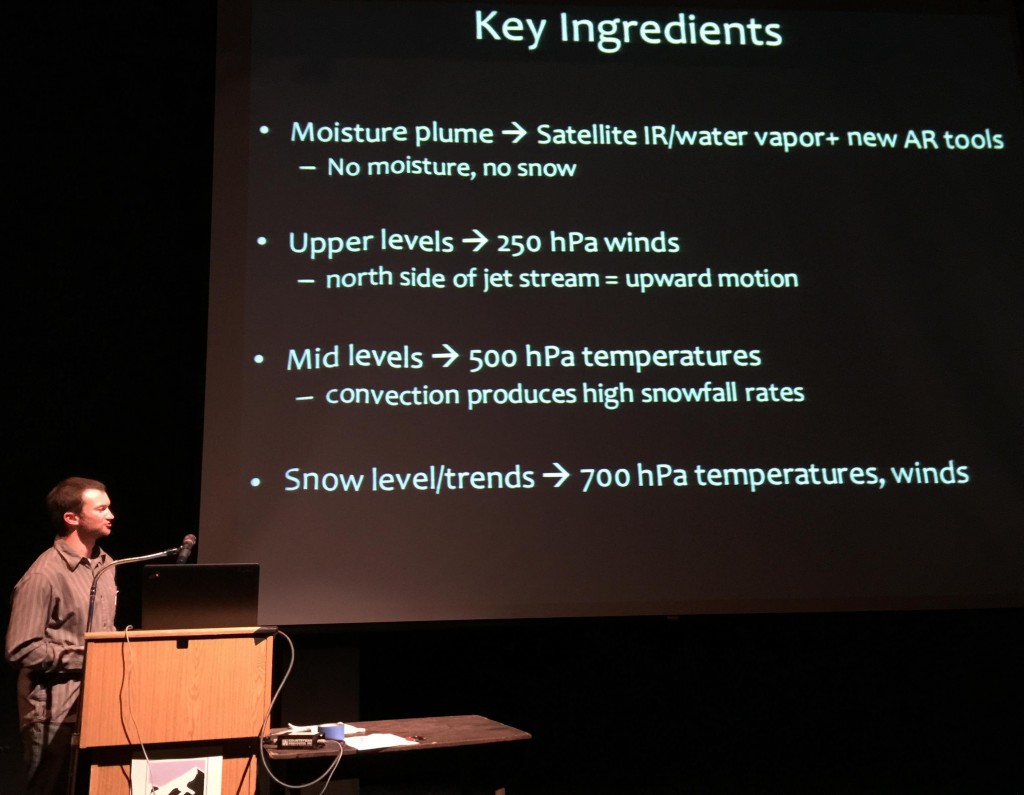
We all know it’s important to be safe when venturing into the backcountry. In order to do so you need to take many different variables into consideration. One important variable is the weather. But how can we predict when one of those infamous Sierra Nevada storms that dumps 6 feet of snow will hit? Meterologist, Ben Hatchett from Powdiction, provided us with insight. His excitement and passion could be seen as he talked about what makes these extreme weather events. I consider myself to be of above average intelligence when it comes to weather, but Ben is next level! An interesting fact highlighted was that these storms typically happen in February and it needs to tap into the atmospheric river of the tropics. In order to receive moisture, Tahoe has to be on the north side of the jet stream. All in all the presentation was very informative, but the real question we all wanted Ben to answer was….is it going to be a good winter this year? It was evident this wasn’t the first time he’d been presented with this question. Like a seasoned vet he wisely avoided any predictions.
What if it doesn’t snow? What are your options?
Due to so much uncertainty over the last few years the topic of “Plan B” was presented. After so many years of terrible snowfall in Tahoe what is a backcountry enthusiast supposed to do? This is an easy question to answer…at least if your Jonathon Dove. The answer is head north to Mt. Shasta! Jonathon of Mt. Shasta Avalanche Center provided an entertaining presentation where he highlighted some of the cool terrain this giant has to offer. Along with this he warned that even though there is some awesome terrain to be accessed, Shasta also has the largest avalanche terrain in California. The images of previous slides were impressive and intimidating. While every backcountry rider should hit Shasta at least once, you have to do your homework. It’s definitely not a good idea to be caught out there during a storm.
Last but not least… the legend Kevin Jones
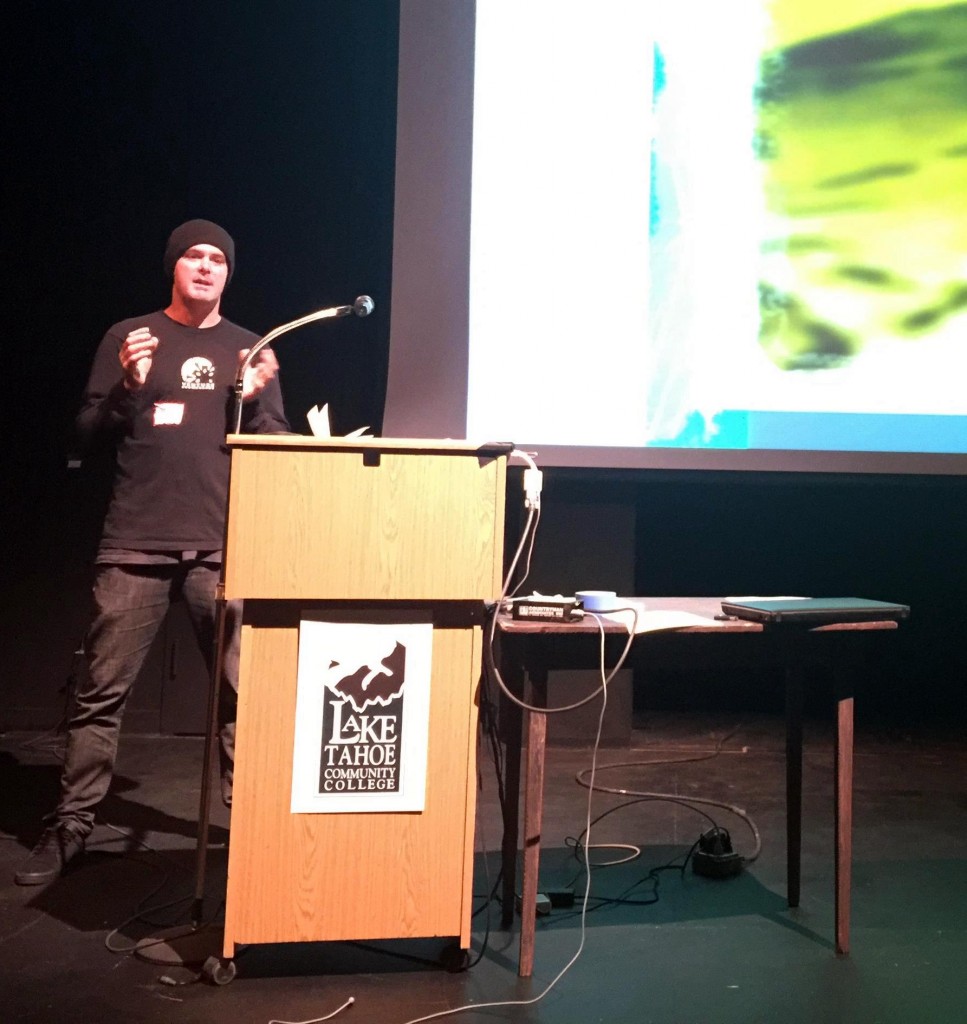
The California Avalanche Workshop was full of amazing presenters, but for me they saved the best for last. This presenter was a man that spent over a year’s worth of time snowboarding some of Alaska’s most challenging peaks. Kevin Jones is a veteran with twenty two years as a pro. During this time he’s lost ten of his close friends in avalanches. His recollections are mixed with many good and bad experiences in the wild mountain ranges all over North America. Kevin’s opener was very engaging. He said, “Avalanche safety is like being on a diet.” With blank stares in the crowd he could see that no one understood what he meant. Interestingly enough, it made sense.
How Avalanche Safety Is Like Being On A Diet
First when starting on a diet you’re very strict on what you eat and how much you exercise. Over time you begin to get lazy and have a slice of pizza or some French fries. This concept is similar with avalanche training. At the beginning of the ski/snowboard season you are very strict on preparation and confirming that everyone has their equipment ready and in good shape. Over the course of the season people begin to get lazier and lazier. It’s human nature. We develop a false sense of security.
Group Dynamics And How They Affect You
The second point was all about group dynamics. It isn’t just the time you are spent out in the mountains. It’s a combination of everything that happened that morning and maybe even that evening which could cause problems later in the day. For example, instead of focusing on the task at hand your mind is still focusing on arriving late to the mountain because your friend got into a fight with girlfriend or they overslept. Ultimately, bad decisions are being made even before you step out the door. Many thoughts go into weather, snow conditions and equipment. Group dynamics are just as important if not more so, because losing your focus can lead to big consequences later on even if everything else lines up perfectly.
Great Refresher And Introduction To Novices
This workshop was a great refresher for the experienced and a great introduction for a novice. It is eye opening on just how dangerous the mountains can be. This event is quickly gaining momentum. With more backcountry users at this second annual it will only continue to grow. If you missed it, be sure to mark your calendars for next year. The California Avalanche Workshop is very informative and fun.







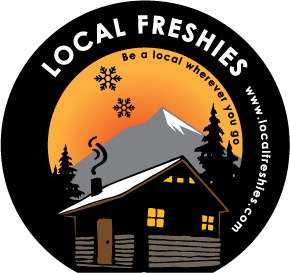
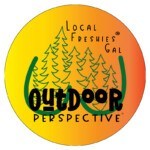
Love to ski…….